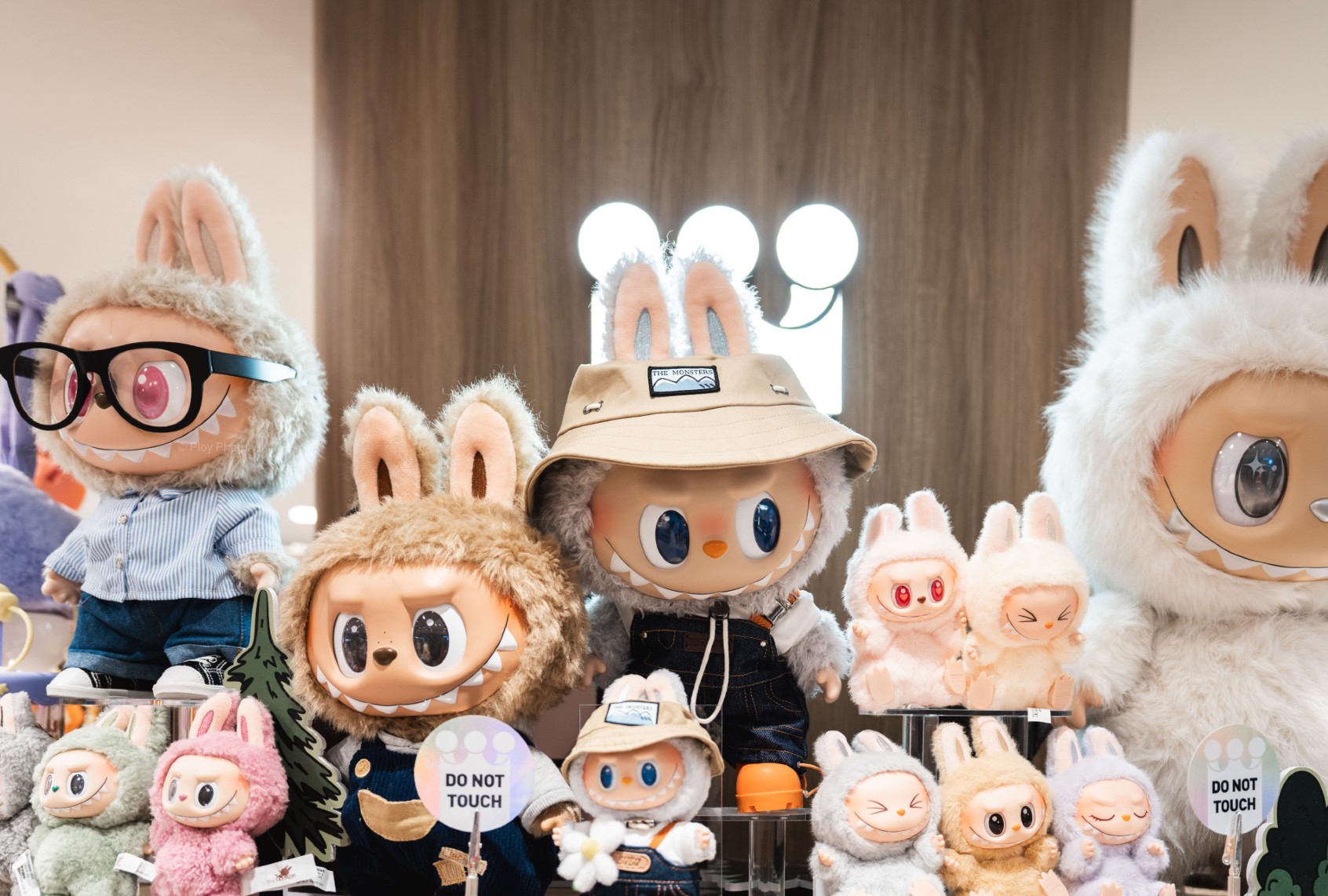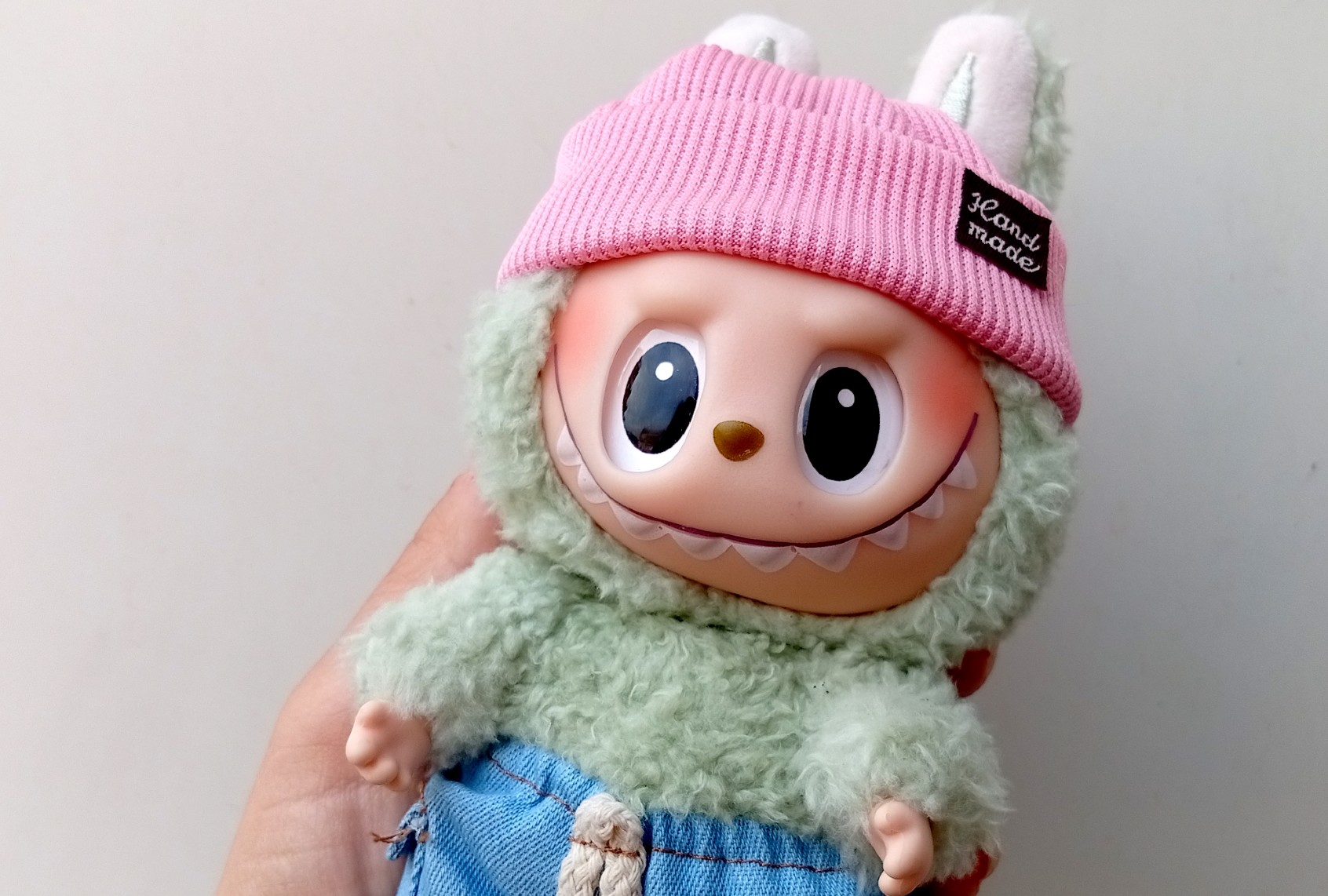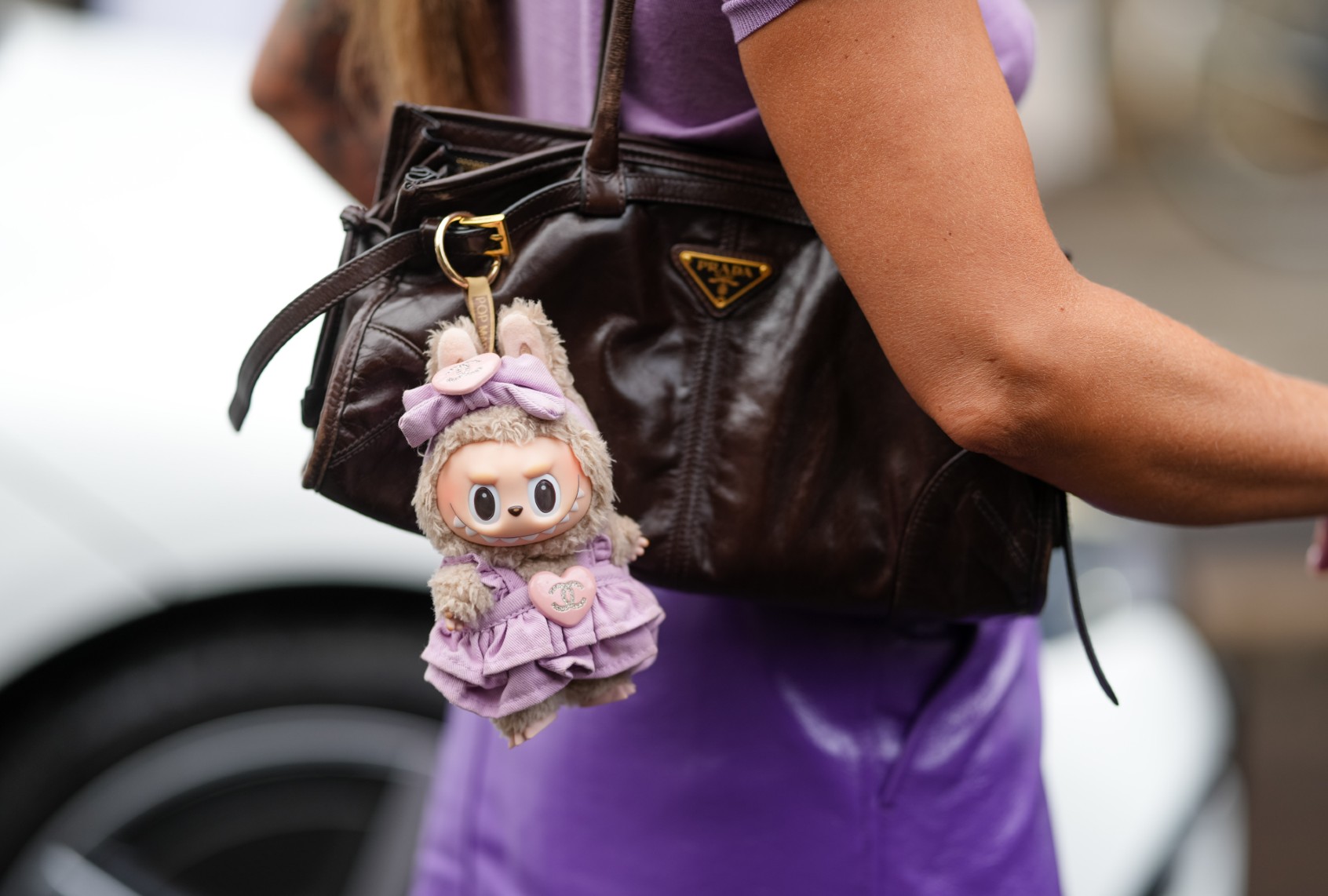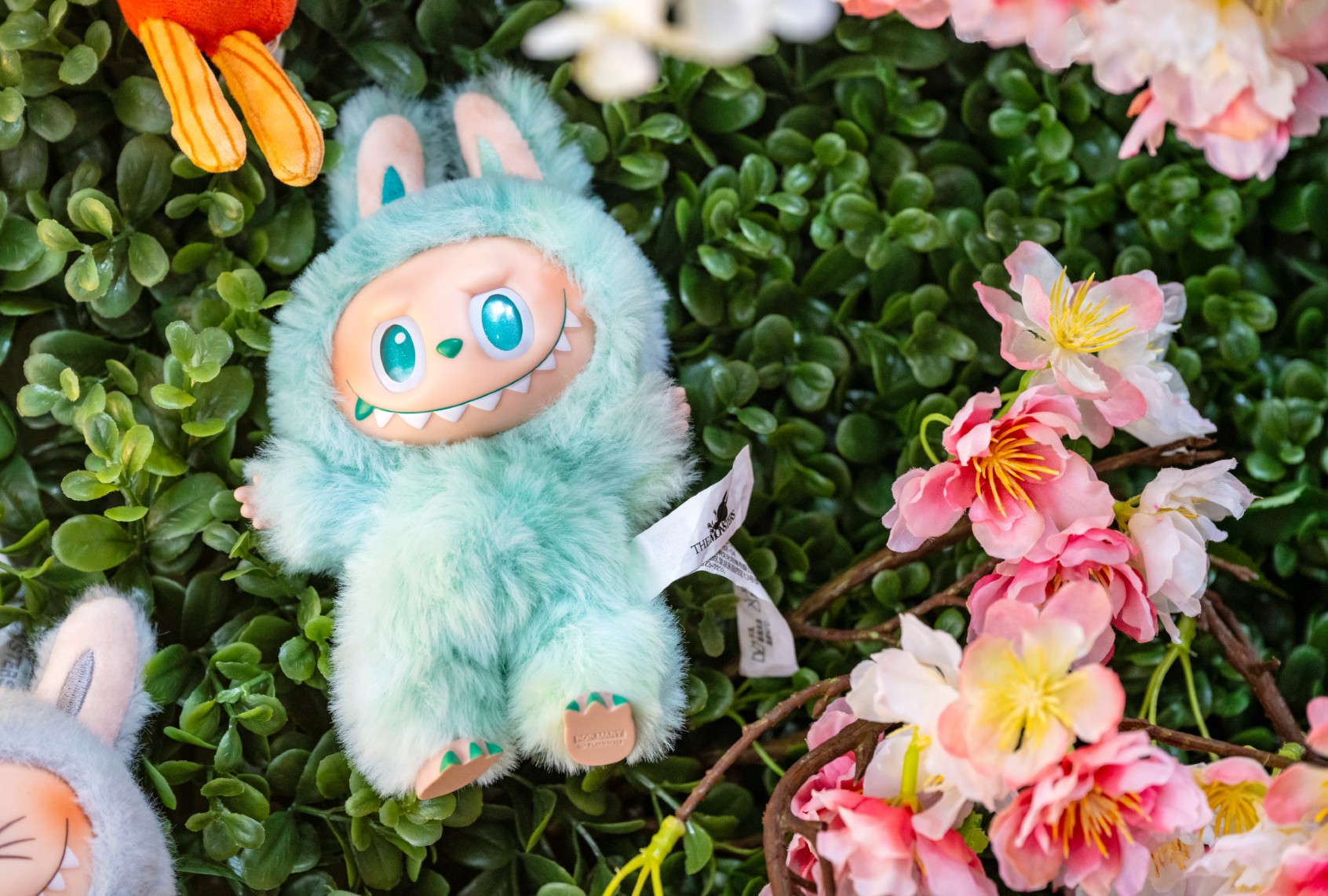These days, so few trends escape the containment of algorithmic silos to become bona fide phenomena that it can be tempting to feel like the ones that do are important to put effort into understanding, lest you end up on the wrong side of a civilizational sea change. But let me offer some reassurance: You are under no obligation to care about Labubu.
If all you know about Labubu is nothing, that’s great. Save your energy. But it’s undeniable that many others have become beyond obsessed.
The New York Times appears to have a whole Labubu desk churning out near-daily dispatches about Labubu stock, Labubu variants and the Q4 market outlook for Labubu. That does make Labubu seem like something you should know about because, like Taylor Swift or generative AI, it’s going to come up in conversation at some point; nobody wants to be in the position of either casting around wildly for context clues or saying something like, “Oh, I don’t know who any of those ‘Real Housewives‘ are” and enduring the awkward silence that follows.
That said, there’s certainly no harm in knowing about Labubu. Having some basic familiarity with the trend might be beneficial, especially with the recent glut of Labubu-related drama in the headlines. So welcome to your Labubu explainer. And thanks for asking, even though you didn’t.

(Ploy Phutpheng/SOPA Images/LightRocket via Getty Images) Labubu dolls in various outfits are neatly displayed inside a Pop Mart store
Labubu 101
Labubus are plush toy monsters with big eyes, rabbitlike ears, and broad, pointy-toothed smiles. Their elfin bodies are furry, their faces are vinyl, and when seen in groups, they have an air of vaguely menacing cuteness. They seem to share some DNA with the toothy beasts featured in Maurice Sendak’s “Where the Wild Things Are,” and look like they might also have a Teletubby or two in the family tree — in other words, they are familiar enough to be instantly appealing. Labubu began life in 2015 as a character drawn by the Hong Kong-born, Netherlands-raised illustrator Kasing Lung in a series of picture books based on Nordic folklore and populated by female elves, including Labubu. Lung licensed the character to Chinese retailer Pop Mart a few years later.
There are various sizes and incarnations of Labubus, but the ones that have gone viral on social media in the last several months are soda-can-sized and retail for anywhere from $30 to $53. They’re often clipped to belt loops or backpacks, sometimes in multiple; the appearance of a Labubu swinging from a handbag carried by Blackpink’s Lisa early in 2025 is often cited as the moment of the toy’s big breakthrough. Rihanna and David Beckham are among other celebrities spotted with Labubus, and Madonna’s recent 67th-birthday festivities included a Labubu cake.
Isabel Bo-Linn, an assistant professor of graphic design at Portland State University, doesn’t collect Labubus herself but likes their mischievous vibe: “They look like they can do no wrong [but] like they’ve done a terrible amount of damage at the same time.”
The main thing about Labubus is that they are collectible and packaged in blind boxes, meaning that you don’t know which one you’ve got until it’s unboxed. Acquisition becomes a game of chance that’s heightened even more by the possibility of unboxing one of the secret Labubus that are produced in small quantities for each collection. (There’s a 1 in 72 chance of scoring, for instance, the Exciting Macaron series’ rare Chestnut Cocoa or the Labubu from the Big Into Energy series that appears to also be big into MDMA.) Blind-box art toys have been around for years, and are hugely popular in large part because they play on the psychological mechanism of intermittent reinforcement. Similar to slot machines or swiping on Tinder, buying blind boxes triggers an anticipatory dopamine hit, and if you’re already a collector, wanting to have the complete lineup of each series can quickly become a preoccupation.
That said, some people just think Labubus are cute. When I buttonhole a woman at Trader Joe’s whose purse has a peach-colored Labubu dangling from it, she explains that she’d been unaware of the phenomenon until her sister bought “four or five” blind boxes in a recent drop and ended up passing along a duplicate. Isabel Bo-Linn, an assistant professor of graphic design at Portland State University, doesn’t collect Labubus herself but likes their mischievous vibe: “They look like they can do no wrong [but] like they’ve done a terrible amount of damage at the same time.” Bo-Linn does collect other blind-box mainstays like Sonny Angels and Smiskis, and she and her students often discuss the difference between collecting and consuming. Much of their attraction to Labubu, she says, centers on intermittent reinforcement. “It’s an emotional sensation; they’re chasing that excitement of, you know, What am I gonna get? Is it going to add to my collection, or is it going to be a repeat? It’s a very immersive experience.”

(Vincenzo Izzo/LightRocket via Getty Images) Hipster Labubu
Labubu’s big score
The anticipatory process of getting a Labubu is about more than just the blind box. Pop Mart’s online drops generally sell out within minutes, while drops at Pop Mart stores draw Black Friday–style crowds that can get unruly enough that some stores have stopped doing in-person events. The gamified quality of Labubu collecting has drawn comparisons to Beanie Babies, the floppy plush animals that debuted in 1993 and became the first internet-fueled collectible craze. New and limited-edition Beanie Babies appealed to collectors, and the toys’ creator, Ty Warner, juiced demand by “retiring” certain designs and driving up their value; Beanie Babies are widely credited with making eBay a secondary-market powerhouse. At the height of the Beanie bubble, parents were buying understuffed bears and bats not for their kids to play with, but with the idea that they would eventually pay for their college tuition. (This did not happen.)
Start your day with essential news from Salon.
Sign up for our free morning newsletter, Crash Course.
Pop Mart was already experiencing huge growth before Labubus hit big — the 15-year-old retailer’s sales outside China more than tripled in 2024, largely on the strength of blind-box sales — but Labubu is now the primary driver of the retailer’s growth. Last week’s announcement of the mini-keychain Labubus sent Pop Mart’s stock skyrocketing; its CEO, Wang Ning, says the company is on track to clear a cool $4 billion in sales for 2025, and plans to open at least 20 new brick-and-mortar stores in the United States by the end of the year. And as with Beanie Babies, Pop Mart has leveraged contrived scarcity into a robust secondary market on eBay, StockX and China’s Xianyu, platforms where Labubus can sell for up to 10 to 50 times their original retail price. In June, one human-scale Labubu fetched more than $150 thousand at auction in Beijing.
The beauty of pop-culture trends is that they can be hugely popular yet never important.
Labubus seem to hit the sweet spot of status: Because of the effort required to acquire one, they carry a whiff of exclusivity even though they aren’t prohibitively expensive. (Just ask the musician who, according to the New York Times, was returning to Los Angeles from Bangkok with a suitcase full of Labubus when his suitcase was intercepted by a group of TSA agents anxious to peep the stash.) But unlike its Beanie forebears, Labubu’s art-world provenance gives it the kind of IYKYK cachet that’s viral catnip — especially when paired with another accessory whose fame was built on controlled scarcity. A Labubu and a Hermès Birkin bag, explains TikTok’s Wadzi Zoe, is an irresistible combo if you’ve got the means to afford both: Labubus used as bag charms gesture to the Birkin’s storied history while adding some modern whimsy that just can’t be achieved with Hermès’s stiffer, stuffier leather charms. (Accessorizing your Labubu with its own tiny Birkin is a bonus flex.)

(Edward Berthelot/Getty Images) Labubu at Copenhagen Fashion Week, on August 04, 2025 in Copenhagen, Denmark
On the Labubble
Labubus are conspicuous and collectible, but there’s a third c-word (no, not that one) that defines Labubu’s current omnipresence. The potential for customizing Labubus is vast, and a quick spin through Reddit modification forums and YouTube tutorials yields a wealth of creative Labubu glow-ups, from handmade designer-style jackets and hats to crocheted UPS and Starbucks uniforms and beyond. Fans have tricked out their monsters with bejeweled teeth, false eyelashes and nail art. Cheech and Chong cosplay? Juggalubus? Yes and yes. At least one tattoo artist has branched out from human skin to Labubu-face vinyl; stylist Marko Monroe has turned Labubu customization into a sideline, personalizing creatures for Lady Gaga and crafting “Wednesday” Labubus for the show’s cast.
Given the speed with which viral trends come and go, Labubu has had impressive staying power. But the question of just how long they will stay covetable looms in the near future. Knockoffs are already proliferating, despite China’s aggressive efforts to smoke out the counterfeits, known as Lafufus. This isn’t an automatic dealbreaker, particularly for customizers who aren’t fussed by obvious tells of a fake, like a different number of teeth. (Real Labubus each have nine.) Lafufus have already been flagged as a serious health risk, what with their shoddy construction and choking hazard–sized parts, but they also pose a risk to the Labubu brand — historically, when trends hit a saturation point and knockoffs flood the market, the end is near. On the other hand, look at Hello Kitty, who turned 50 in 2024 and remains beloved by fans (even those who were shocked to find out she hasn’t been a cat this whole time).
But ultimately, none of this should affect you, the person whose life is blissfully Labubu-free. The beauty of pop-culture trends is that they can be hugely popular yet never important. Labubu’s IP isn’t going away, but that doesn’t mean it’s going to be a constant presence, either: Once Gen X got tired of Troll dolls in the 1980s, they were kind enough to let it ride for a few decades before roaring back in a new form. And now that you know about Labubus, you’re free to forget all about them.
Read more
about trends


